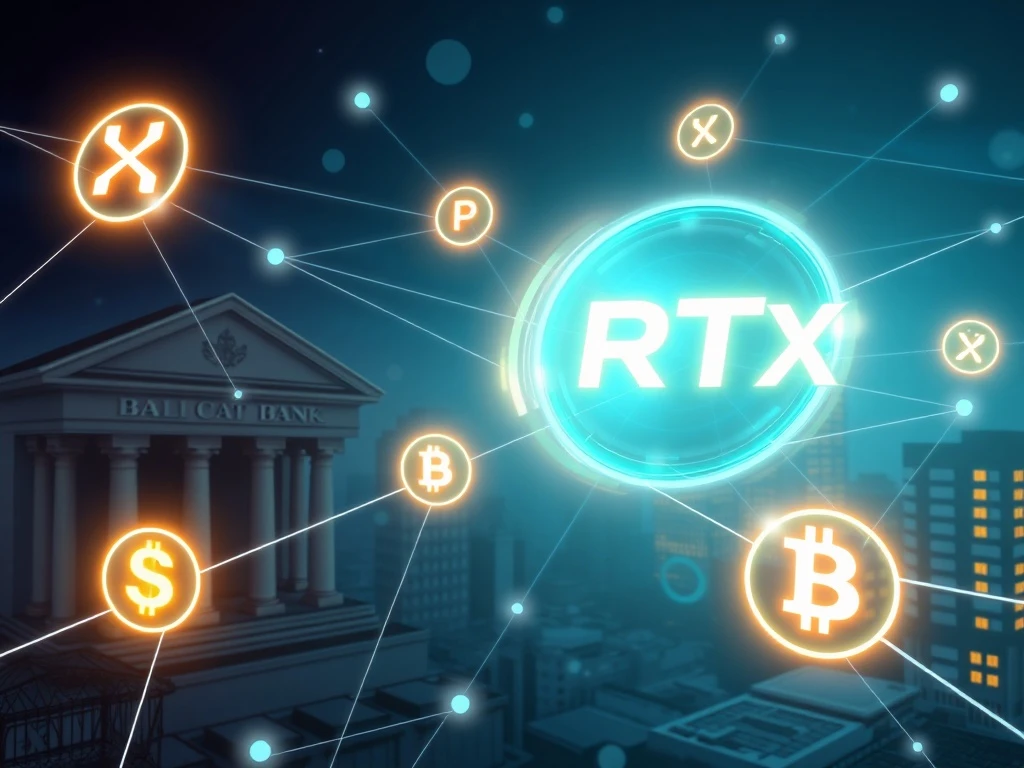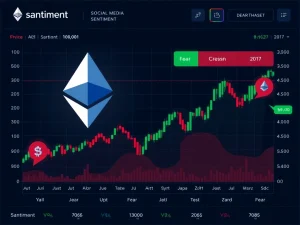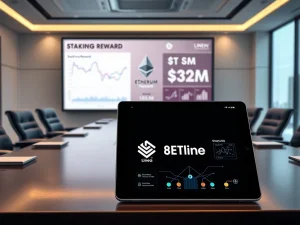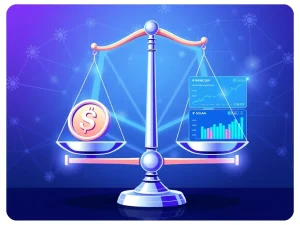XRP News Today: Unveiling the Future of Crypto-Backed Loans with Transformative PayFi Tokens

The financial world is buzzing with a significant shift: traditional banks are increasingly exploring crypto-backed loan programs. This emerging trend highlights the immense potential for specific digital assets, particularly PayFi tokens, to become central players in a rapidly evolving market. Tokens like XRP and XLM continue to lead discussions, while newer entrants such as Remittix are quickly gaining traction due to their practical applications in cross-border payments. This convergence of institutional interest and utility-driven innovation is reshaping expectations for the entire sector.
XRP News: A Bullish Breakout and Institutional Interest
Recent XRP News has captivated investors, as the token has broken out of a multi-month consolidation phase. This movement draws comparisons to its notable bullish pattern from 2017. Analysts are projecting a potential price target of $12.50 if the current trend holds, citing strong technical indicators and renewed institutional demand. This optimism reflects a growing confidence in XRP’s foundational role in global payment solutions.
However, recent movements of 50 million XRP by a wallet linked to Ripple co-founder Chris Larsen have sparked short-term volatility. Despite these fluctuations, long-term holders remain optimistic. Veteran trader Ripple Van Winkle advises investors to focus on the broader market dynamics rather than immediate price movements, emphasizing the long-term potential of XRP in the PayFi ecosystem.
Stellar (XLM) Price Action and Cross-Border Appeal
Stellar (XLM) experienced record growth in July, surging 75.7%. This marked its highest monthly gain since 2020, signaling strong market confidence. This impressive momentum was followed by a pullback, with open interest dropping 33% and traders withdrawing $196 million from derivatives markets. Technical indicators like the MACD have turned bearish, signaling caution among some traders.
Yet, XLM’s appeal persists. Traditional banks are increasingly evaluating crypto assets for cross-border lending, particularly those with proven payment infrastructure. Stellar’s network, designed for fast and low-cost international transactions, aligns well with institutional priorities, making its XLM price movements closely watched by those interested in efficient global finance.
Remittix (RTX): The Next Generation of PayFi Tokens?
Remittix (RTX) has emerged as a strong contender in the PayFi space, having successfully raised $17.3 million through the sale of 569 million tokens. The project’s real-world utility is already evident, with a UK-based media group using its platform to make low-cost, high-speed payments to contributors in Nigeria, Ghana, and South Africa. This demonstrates Remittix’s ability to solve tangible payment challenges immediately.
Analysts cite several factors positioning Remittix as a standout:
- Its upcoming wallet beta, launching September 15, which will enhance user accessibility.
- A 50% bonus for early buyers, incentivizing adoption.
- Its ability to deliver immediate value in cross-border transactions, particularly during periods of reduced DeFi activity and meme coin rotations.
Priced under $0.10, the token is being described by some investors as “XRP 2.0,” highlighting its potential to disrupt the cross-border payments market. Its inclusion in Super Grok AI’s 2025 watchlist and designation as a “next 100x” candidate in early reports further underscore its promising outlook.
The Rise of Crypto-Backed Loans and the PayFi Landscape
The competitive landscape underscores a broader shift toward tokens with clear use cases and robust infrastructure. While XRP and XLM benefit from established networks and institutional partnerships, Remittix’s rapid real-world deployment and affordability make it an attractive option for investors seeking exposure to the PayFi boom and the growing sector of crypto-backed loans.
As banks and fintech firms continue to integrate blockchain into lending models, the focus remains on projects that address operational inefficiencies in legacy systems. XRP’s role in Ripple’s global settlement network and XLM’s scalable payment solutions align with institutional priorities. However, Remittix’s ability to deliver immediate value in cross-border transactions could set it apart in the coming months. The next few months will be critical in determining which PayFi tokens solidify their leadership in this evolving ecosystem.
Conclusion: A New Era for Digital Finance
The exploration of crypto-backed loans by traditional financial institutions marks a pivotal moment for the cryptocurrency market. This development, coupled with the increasing traction of PayFi tokens like XRP, XLM, and Remittix, signals a future where digital assets are deeply integrated into global finance. Investors and financial institutions alike are keenly watching these tokens, recognizing their potential to streamline payments, reduce costs, and offer new lending avenues. The coming period will likely solidify the roles of these innovative projects in shaping the next generation of financial services.
Frequently Asked Questions (FAQs)
Q1: What are crypto-backed loans?
Crypto-backed loans are a type of loan where borrowers use their cryptocurrency holdings as collateral. Instead of traditional assets like real estate or cars, digital assets such as Bitcoin or Ethereum are locked up to secure a loan, often in fiat currency or stablecoins. This allows crypto holders to access liquidity without selling their digital assets.
Q2: Why are banks interested in crypto-backed loans?
Banks are interested in crypto-backed loans for several reasons: they represent a new revenue stream, allow banks to tap into the growing digital asset market, and can potentially offer higher yields. Additionally, integrating blockchain technology for such loans can improve efficiency, reduce transaction costs, and enhance security compared to traditional lending systems.
Q3: How do PayFi tokens like XRP and XLM facilitate cross-border payments?
PayFi tokens like XRP and XLM are designed to make cross-border payments faster, cheaper, and more efficient. XRP, through Ripple’s network, acts as a bridge currency, allowing financial institutions to send money internationally without needing pre-funded nostro/vostro accounts. XLM, on the Stellar network, provides a similar function by enabling rapid, low-cost transfers between different currencies, acting as a global payment rail for various financial assets.
Q4: What makes Remittix (RTX) unique among PayFi tokens?
Remittix (RTX) stands out due to its immediate real-world utility in facilitating low-cost, high-speed payments, particularly to emerging markets like Nigeria, Ghana, and South Africa. Its practical application is already demonstrated by a UK-based media group using its platform for payments. Additionally, its upcoming wallet beta, attractive pricing (under $0.10), and significant early investment make it a promising new entrant, with some calling it “XRP 2.0” for its focus on tangible payment solutions.
Q5: What is the significance of the recent XRP News regarding its price breakout?
The recent XRP News of its price breakout from a multi-month consolidation phase is significant because it suggests a potential return to a bullish trend, drawing comparisons to its 2017 surge. This breakout is supported by strong technical indicators and renewed institutional demand, leading analysts to project potential price targets of $12.50 if the trend continues. It indicates growing market confidence in XRP’s long-term value and utility.










